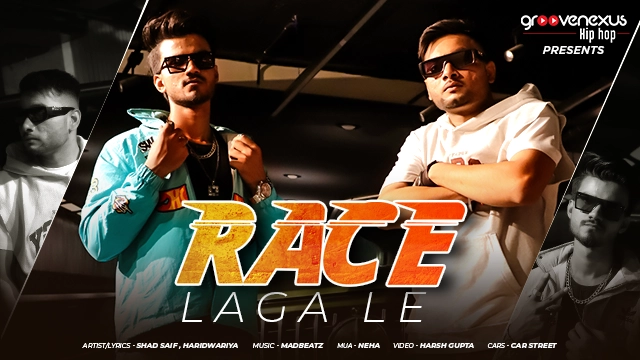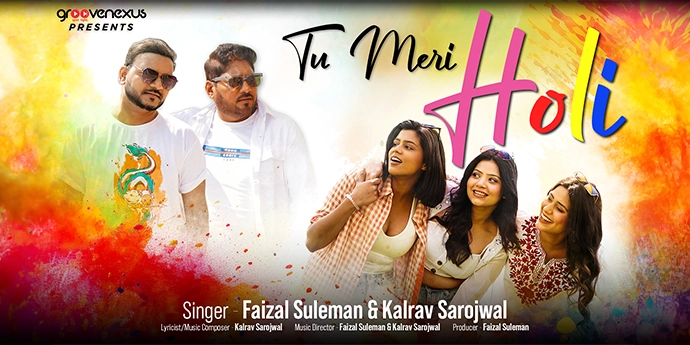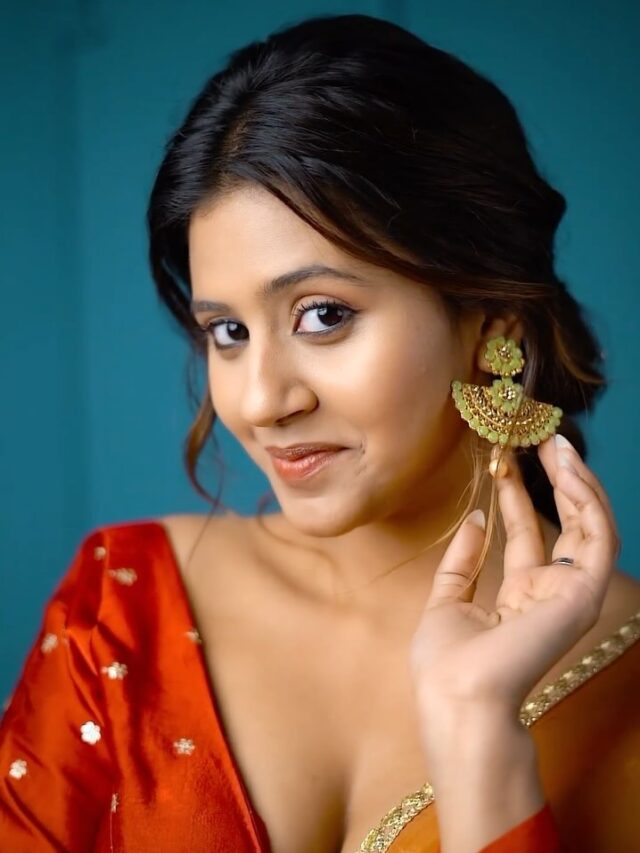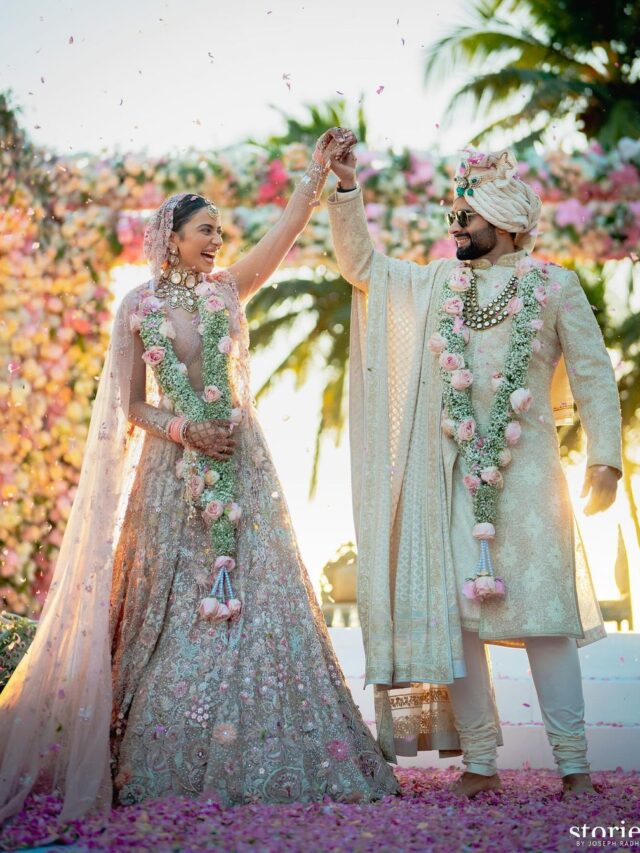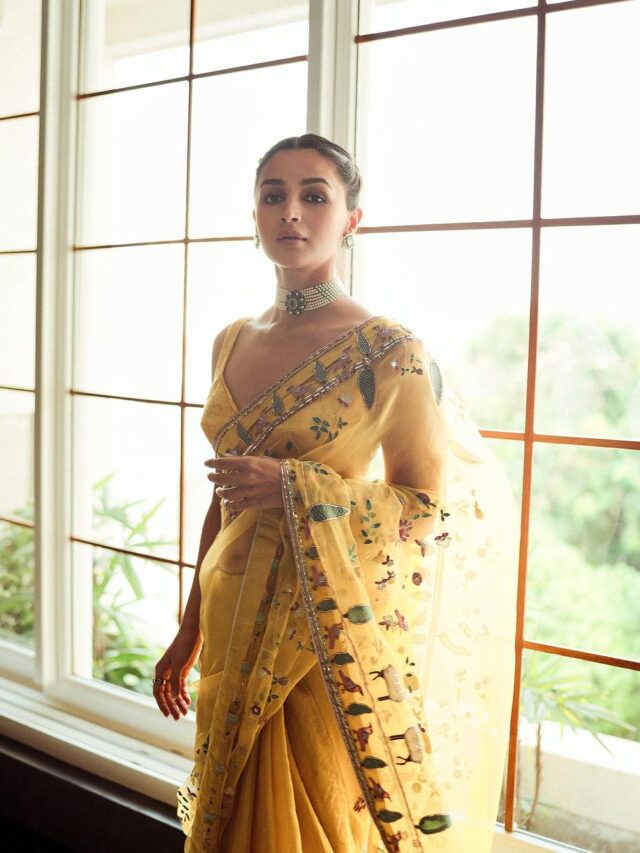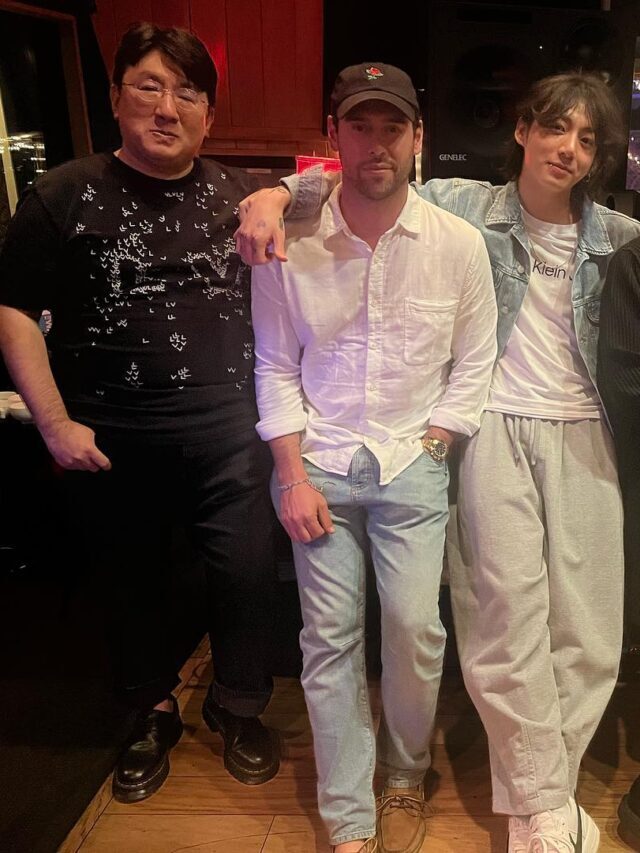Table of Contents
What is Chhath Puja?
Chhath Puja is an ancient Hindu festival celebrated in the Indian subcontinent, particularly in the states of Bihar, Uttar Pradesh, Madhya Pradesh, Jharkhand, West Bengal, and the Nepalese provinces of Koshi, Madhesh, and Lumbini. During Chhath Puja, prayers are offered to the sun god, Surya, to express gratitude for the blessings of life on earth and to seek the fulfillment of certain wishes.
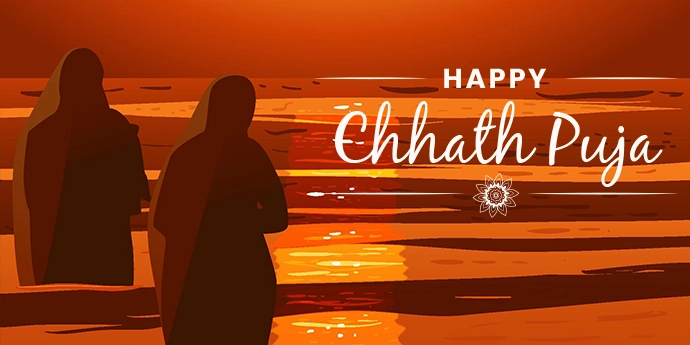
The festival is dedicated to Chhathi Maiya, the sixth form of Goddess Devi Prakriti and the sister of Lord Surya. It takes place on the sixth day of the lunar month of Kartika (October–November) in the Hindu calendar, six days after Diwali. The rituals span four days and involve activities such as holy bathing, fasting, abstaining from drinking water (vrata), standing in water, and offering prayer offerings (prasad) and greetings to the setting and rising sun. Some devotees also perform a prostration march as they head to the riverbanks.
Environmentalists argue that the Chhath festival stands out as one of the most environmentally friendly religious festivals worldwide. Devotees across different regions prepare similar religious food (prasada) and offerings. While the festival is predominantly observed in the Terai region of Nepal and the Indian states of Bihar, Uttar Pradesh, West Bengal, and Jharkhand, its celebration extends to areas with a significant diaspora and migrant population from these regions. Thousands of people partake in the festivities, even in major urban centers like Mumbai and Delhi in northern India.
Significance of Chhath Puja:
Chhath Puja holds great significance as it is dedicated to the sun god, Surya, who is essential for the life of all creatures on earth. The sun, being visible to every being, serves as the foundation of life. In addition to worshipping the Sun God, Chhathi Maiya is also revered during this festival. According to Vedic astrology, Chhathi Maiya (or Chhathi Mata) is believed to safeguard children from diseases and problems, ensuring their long lives and good health.
The roots of Chhath Puja can be traced back to the early Vedic period, where sages would observe fasts for several days and perform the puja with mantras from the Rigveda. Legend has it that Karna, the son of Lord Surya and the king of Anga Desh (modern-day Bhagalpur in Bihar), also performed Chhath Puja. Another legend associates the Pandavas and Draupadi with the Puja, suggesting that they performed it to overcome obstacles in their lives and regain their lost kingdom. For the people from Purvanchal, Chhath Puja is considered a Mahaparva.
Description:
Chhath Puja, a traditional festival, spans four days, commencing with Kartik Shukla Chaturthi and concluding with Kartik Shukla Saptami. This festival is observed twice a year:
- Chaiti Chhath: Celebrated during the Chaitra month of Vikram Samvat.
- Kartik Chhath: Observed on a grand scale in the Kartika month of Vikram Samvat.
Nahaay Khaay (Day 1):
This marks the beginning of Chhath Puja. The devotees, known as Parvaitin (derived from the Sanskrit word parv, meaning “occasion” or “festival”), start the day by taking a sacred bath. Following this, they meticulously clean the entire house, its surroundings, and the paths leading to the Ghat. The Parvaitin typically prepares Sattvik Lauka Bhaat (a dish made with Bottle Gourd and Bengal Gram Lentil along with Arva Rice Bhaat). This offering is presented to the deity in the afternoon as Bhog, symbolizing the initiation of the Parv. It also serves as the final meal for the Parvaitin during Chhath Puja. The consumed food is believed to shield the mind from harboring thoughts of vengeance.
Rasiaav-Roti/Kharna/Lohanda (Day 2):
Kharna, alternatively termed Rasiaav-Roti or Lohanda, marks the second day of Chhath Puja. On this day, devotees refrain from consuming even a single drop of water as an offering in their worship. In the evening, they partake in gur ke kheer (a sweet dish made with jaggery), known as Rasiaav, along with Roti.
Sanjh ka Arag (Day 3):
In places where natural water bodies like rivers or ponds are unavailable, devotees create makeshift setups indoors, such as using tanks or fountains. Some locations may have restrictions on using beaches for the puja.
On this day, devotees spend their time preparing prasad (offerings) at home, often assembling a bamboo basket adorned with fruits, Thekua, and rice laddus. As the day progresses, the entire household accompanies the devotee to a riverbank, pond, or another sizable water source to present Arghya offerings to the setting sun. The atmosphere during this occasion can be festive, resembling a carnival. Beyond the devotees and their friends and family, many participants and onlookers eagerly contribute and seek blessings from the worshipper.
During the arghya ritual, Gangajal water is offered to the Sun God, and Chhathi Maiya is worshipped with the prasad. Following the worship of the Sun God, Chhath songs are sung into the night, and the Vrat katha is read.
Upon returning home, devotees collectively perform the ritual of kosi bharai with other family members. They gather 5 to 7 sugarcanes, tie them together to create a mandap, and beneath its shade, light 12 to 24 Diya lamps. Thekua and other seasonal fruits are offered. The same ritual is repeated the next morning between 3 am and 4 am, after which devotees present arghya or other offerings to the rising sun.
Bhor ka Aragh (Day 4):
On the final day of Chhath Puja, devotees rise before sunrise and head to the riverbank to present an arghya to the rising sun. Following this, they seek the protection of the child and the peace and happiness of the entire family from Chhatti Maiya. After the worship, devotees break their fast by drinking water and consuming a small portion of prasad, a practice known as Paran or Parana.
Rituals and Traditions:
The primary participants in Chhath Puja, known as parvaitin (derived from the Sanskrit word parv, meaning “occasion” or “festival”), are typically women. However, Chhath is not limited to a specific gender, and many men also observe this festival. The parvaitin offer prayers for the well-being of their families and the prosperity of their children.
In certain communities, once a family member begins performing Chhath Puja, they are obligated to continue the tradition annually and pass it down to successive generations. The festival is only skipped if there is a death in the family that year. If an individual discontinues the ritual in any particular year, it ceases permanently, and resuming it becomes impossible. However, in other communities, such a practice is not mandatory.
Prasad offerings consist of Thekua, Khajuria, Tikri, Kasar, and fruits (primarily sugar canes, sweet lime, coconut, banana, and various seasonal fruits), presented in small bamboo baskets. The food is strictly vegetarian and prepared without salt, onions, or garlic, emphasizing the purity of the offerings.
History and Associated Legends:
The worship of Chhathi Maiya during the Chhath festival has roots in ancient texts, including the Brahma Vaivarta Purana. Legend has it that the inception of Chhath Puja took place in the holy city of Varanasi, initiated by the Gahadavala dynasty.
In the Munger region, the festival is closely linked to Sita Manpatthar (Sita Charan; literally, Sita’s footsteps). The Sitacharan temple, situated on a boulder in the middle of the Ganges in Munger, serves as a significant center of public faith associated with the Chhath festival. According to belief, Goddess Sita performed the Chhath festival in Munger, marking the beginning of the celebration. This is why Chhath Mahaparva is celebrated with great enthusiasm in Munger and Begusarai.
According to another legend, King Priyavrat, the son of the first Manu Swayambhu, faced sorrow due to the lack of children. Upon the guidance of Maharishi Kashyap, he conducted a yajna to seek a son. Following the yajna, Queen Malini gave birth to a son who was unfortunately born lifeless. The king and his family were grief-stricken. In response to the king’s prayers, Mata Shashthi appeared in the sky, identifying herself as Chhathi Maiya, the Sixth form of Devi Parvati. She proclaimed her role in protecting all children and bestowing blessings on childless parents. The Goddess then revived the lifeless child with her divine touch, leading the king to express profound gratitude and worship Shashthi Devi. This event is believed to have turned the puja into a global celebration.
Chhath is mentioned in both major Indian epics. In the Ramayana, upon Rama and Sita’s return to Ayodhya, Deepawali was celebrated, and on its sixth day, Ramrajya (Kingdom of Rama) was established. On this day, Rama and Sita observed a fast, and Surya Shashthi/Chhath Puja was performed by Sita, resulting in the blessing of Lava and Kush as their sons.
In the Mahabharata, Kunti performed Chhath Puja after escaping from Lakshagriha. It is believed that Karna, the son of Surya and Kunti, was conceived after she observed Chhath Puja. Draupadi is also said to have performed the Puja for the Pandavas to ensure victory in the Kurukshetra War.
List of Famous Chhath Puja Songs –
1. Uga Hai Suraj Dev
Uga he suraj dev bhel bhinsarva
Aragh ke re berva pujan ke re berava ho
Badki pukare dev dunu kar jorwa
Aragh ke re berva pujan ke re berava ho
Baajhin pukare dev dunu kar jorwa
Aragh ke re berva pujan ke re berava ho
“Uga Hai Suraj Dev” is a soul-stirring Chhath Puja song that captivates the essence of the traditional festival through its powerful lyrics and melodious composition. Sung by the renowned Anuradha Paudwal, the song brings to life the spirit of Chhath Pooja with its heartfelt rendition.
The lyrics, penned by Vinay Bihari, beautifully describe the ritualistic worship and devotion during Chhath Pooja. As the sun rises, the devotees, with unwavering faith, engage in the ritualistic practices of Aragh, offering their prayers with immense dedication. The repetitive chanting of devotional calls adds a rhythmic and enchanting quality to the song, creating a mesmerizing atmosphere that resonates with the sacredness of the occasion.
Surinder Kohli’s musical direction enhances the emotional depth of the song, complementing Anuradha Paudwal’s soulful rendition. The composition seamlessly weaves together traditional elements with a modern touch, making it a timeless piece that transcends generational boundaries.
Part of the “Chhath Pooja Ke Geet” album, released under the esteemed T-Series music label, “Uga Hai Suraj Dev” stands as a testament to the rich cultural heritage and musical brilliance associated with Chhath Puja. The song is not merely an auditory experience but a spiritual journey that connects the listener to the profound rituals and traditions of this revered festival. With its powerful vocals, evocative lyrics, and skillful musical arrangement, this Chhath Pooja Geet has rightfully earned its place as an iconic and cherished piece within the realm of devotional music.
Singer: Anuradha Paudwal
Music Director: Surinder Kohli
Lyricist: Vinay Bihari
2. Kaanch Hi Baans Ke Bahangiya
Kanch Hi Bans Ke Bahangiya
Bahangi Lachakat Jaay
Bahangi Lachakat Jaay
Hoi Naa Balam Ji Kahariya
Bahangi Ghate Pahunchaay
Bahangi Ghate Pahunchaay
“Kaanch Hi Baans Ke Bahangiya” is a soul-stirring Chhath Pooja Geet that transports listeners into the heart of traditional celebrations. Sung with unmatched devotion by the legendary Anuradha Paudwal, this timeless piece captures the essence of Chhath, a festival dedicated to the worship of the sun god.
The lyrics, penned in the eloquent style of traditional poetry, paint vivid pictures of the rituals and customs associated with Chhath. The verses beautifully describe the swaying movements of the Bahangiya (women offering prayers), symbolizing a seamless blend of faith and festivity. The rhythmic repetition of phrases like “Bahangi Lachakat Jaay” and “Bahangi Ghate Pahunchaay” creates a mesmerizing cadence, echoing the lively spirit of the occasion.
Surinder Kohli’s musical composition adds depth and emotion to the composition, complementing Anuradha Paudwal’s soulful rendition. The melody, adorned with traditional instruments, captures the cultural richness of Chhath Pooja, creating an immersive experience for the listener.
The song takes us on a journey through the rituals, from seeking blessings to expressing gratitude, with each verse contributing to the overall narrative of devotion and celebration. Anuradha Paudwal’s emotive delivery, coupled with the rich musical arrangement, makes “Kaanch Hi Baans Ke Bahangiya” a timeless and indispensable addition to the Chhath Pooja repertoire.
As part of the esteemed T-Series catalog, this Chhath Pooja Geet continues to be a cherished piece, resonating with the cultural heritage and spirituality associated with this auspicious festival. It stands as a testament to the enduring power of music to connect people with their traditions and faith.
Singer: Anuradha Paudwal
Music Director: Surinder Kohli
Lyricist: Traditional
3. Maarbo Re Sugwa Dhanukh Se
Nariyalawa je pharela khabad se
Oha par suga medaraye
Oha par suga medaraye
U je khabari janaibo adit se
Suga dihalee jhuthiyay
Suga dihalee jhuthiyay
“Maarbo Re Sugva Dhanukh Se” is a heartfelt Devi Bhajan that transcends the boundaries of musical expression, offering a soulful tribute to the divine. Renowned singer Anuradha Paudwal lends her melodious voice to this devotional composition, breathing life into the traditional lyrics that echo with spiritual fervor.
The song is a vibrant ode to the rituals and celebrations associated with Chhath Puja, a festival dedicated to the worship of the sun god. The lyrics, steeped in traditional poetry, paint a vivid picture of devotion, capturing the essence of the rituals performed with utmost sincerity. The repetition of phrases like “Suga gire murjhaye” and “Aadit hoi na sahay” adds a rhythmic cadence, enhancing the emotional impact of the composition.
Composer Surinder Kohli weaves a musical tapestry that complements the devotional atmosphere of the song. The arrangement, adorned with traditional instruments, creates a seamless fusion of melody and spirituality, enveloping the listener in a sacred ambiance.
Anuradha Paudwal’s soul-stirring rendition adds depth and emotion to the composition, making “Maarbo Re Sugva Dhanukh Se” a powerful expression of faith. The song not only pays homage to the divine but also serves as a cultural and spiritual connection for those partaking in Chhath Puja festivities.
As part of the T-Series catalog, this Devi Bhajan stands as a testament to the label’s commitment to preserving and promoting traditional Indian music. “Maarbo Re Sugva Dhanukh Se” continues to be a cherished piece, resonating with the cultural richness and devotion associated with Chhath Puja, making it an indispensable part of the festival’s musical heritage.
Singer: Anuradha Paudwal
Composer: Surinder Kohli
Lyrics: Traditional
4. Chhathi Maiya Bulaye
Ban pardesiya je gaila shahar tu
Bisra ke log aapan gaon ke ghar tu
Uhe gharwa uhe galiyaa pukare…
Chhathi Maiyaa rasta nihare…
Jai ho chhathi maiyaa
Bulawe chhathi Maria
“Chhathi Maiya Bulaye” is a vibrant and soulful musical journey that seamlessly blends traditional devotional fervor with contemporary musical artistry. The enchanting voice of Vishal Mishra carries the listeners through the rhythmic landscapes of this Chhath Puja anthem, making it an uplifting and spiritually resonant experience.
Set against the backdrop of the revered Chhathi Maiya festival, the lyrics penned by Kaushal Kishore capture the essence of devotion, familial bonds, and the cultural richness associated with the celebration. The verses paint a vivid picture of the rituals and traditions observed during Chhath Puja, invoking a sense of reverence and connection with the divine.
Vishal Mishra’s musical composition is a masterpiece that effortlessly weaves together traditional elements with modern sounds. The use of instruments like flute, shehnai, guitars, and percussion creates a rich and immersive sonic landscape, enhancing the emotional impact of the song. The arrangement, produced by Gaurav Vaswani and Vishal Mishra, showcases a meticulous attention to detail, bringing out the authenticity of the cultural context.
The chorus, led by Vishal Mishra, resounds with the infectious energy and devotion associated with Chhath Puja. The melodic progression and rhythmic beats contribute to the celebratory mood, making “Chhathi Maiya Bulaye” not just a song but a musical celebration of the festival.
The song’s production credits boast a team of skilled musicians and technicians, from Trihangku Lahkar’s engineering finesse to the contributions of instrumentalists like Paras Nath, Omkar Dhumal, and others. The collaborative efforts result in a harmonious and well-crafted piece of art that pays homage to the cultural and spiritual significance of Chhath Puja.
As part of Clik Records, “Chhathi Maiya Bulaye” stands as a testament to the label’s commitment to showcasing diverse musical expressions. With its captivating melody, heartfelt lyrics, and top-notch production, this song not only captures the essence of Chhath Puja but also resonates as a musical gem that transcends cultural boundaries.
Singer: Vishal Mishra
Composer: Vishal Mishra
Lyrics: Kaushal Kishore
5. Pahile Pahil Chhathi Maiya
Pahile pahile hum kaini
Chhathi maiya vrat tohar
Chhathi maiya vrat tohar
Kariha kshama chhathi maiya
Bhool chuk galati hamar
Bhool chuk galati hamar
“Pahile Pahil Chhathi Maiya” – a heartfelt and soulful tribute to the revered Chhath Puja by the legendary Sharda Sinha. This melodic offering is dedicated to the next generation of devotees of the Sun God, beautifully capturing the essence of the festival with its earthy and simplistic connection to faith and tradition.
As Sharda Sinha’s distinctive voice resonates through the verses, the lyrics convey the significance of Chhath Puja and the deep connection it fosters between the devotee and Chhathi Maiya. The song encourages forgiveness and seeks blessings, acknowledging the human propensity for mistakes and seeking redemption.
The devotion expressed in “Pahile Pahil Chhathi Maiya” extends beyond personal supplication, embracing the familial and societal aspects of the festival. The lyrics paint a vivid picture of the rituals associated with Chhath Puja, from the tender moments of cradling a child in one’s arms to the elaborate preparations along the riverbanks.
Drenched in the warmth of maternal love and familial bonds, the song beautifully describes the joy and contentment derived from performing the Chhath Vrat. The verses narrate the meticulous preparations, the adorned ghats, and the deep spiritual connection with Chhathi Maiya.
Sharda Sinha’s rendition is more than just a song; it is a cultural heirloom passed down to the next generation. It carries the purity and faith of Chhath Puja forward, making it relevant and resonant with the evolving versions of the festival. The mention of Chhath 2.0 acknowledges the festival’s timeless appeal, embraced by new people and generations while maintaining its authenticity.
The collaboration between Sharda Sinha, Swar Sharda, Champaran Talkies, and Neo Bihar, presented by Worldwide Records, adds a contemporary touch to this age-old tradition. The song’s composer, Sharda Sinha herself, ensures that the music complements the emotional depth of the lyrics.
“Pahile Pahil Chhathi Maiya” is more than a musical composition; it is a cultural narrative that transcends time and generations. It reminds us of the enduring power of faith, tradition, and the unbroken bond between the devotee and Chhathi Maiya. Sharda Sinha’s timeless contribution to Chhath Puja continues to be a source of inspiration and celebration.
Presented By: Swar Sharda |Champaran Talkies | Neo Bihar
Singer: Sharda Sinha
Composer: Sharda Sinha
6. Patna Ke Ghat Par
patna ke ghaat par hamhun araghiya dekhab hey chhathi maiyya
hum naa jaaeeb dusar ghaat dekhab hey chhathi maiyya
hum naa jaaeeb dusar ghaat dekhab hey chhathi maiyya
sup lele thadh maay dom dominiya dekhab hey chhathi maiyya
ohi supe aragh devaay dekhab hey chhathi maiyya
ohi supe aragh devaay dekhab hey chhathi maiyya
“Patna Ke Ghat Par” is a soul-stirring Chhath Pooja Geet that beckons listeners to the iconic ghats of Patna, where devotion and celebration blend harmoniously. Sung with passion by Sunil Chhaila Bihari and Kalpana, this musical masterpiece captures the spirit of Chhath Pooja, a festival that reveres the sun god with unparalleled fervor.
The lyrics, crafted by Vinay Bihari, paint a vivid picture of the Chhath festivities at the ghat, where devotees gather to offer their araghiyas and seek blessings from Chhathi Maiyya. The verses express a deep connection to traditions, emphasizing the exclusivity of Patna’s ghats in this sacred celebration. The refrain, “Dekhab hey chhathi maiyya,” becomes a rhythmic invocation, echoing the devotion of the worshipers.
The composition by Surendra Kolhi and Rajesh Gupta enhances the emotional depth of the song, with traditional instruments creating a melodic backdrop that transports the listener to the heart of the Chhath Pooja rituals. The synergy between the heartfelt lyrics and the emotive voices of Sunil Chhaila Bihari and Kalpana makes “Patna Ke Ghat Par” a musical journey of faith and celebration.
The music video, directed by Deep Shresth and picturized on Sunil Chhaila Bihari and Kalpana, visually encapsulates the vibrant atmosphere of Chhath Pooja at Patna’s ghats. The footage captures the devotion, the rituals, and the cultural richness of the celebration, providing a captivating visual complement to the audio experience.
As part of T-Series’ collection of Chhath Pooja Geet, “Patna Ke Ghat Par” stands out as a testament to the label’s commitment to preserving and promoting traditional Indian music. With its authenticity, cultural significance, and musical excellence, this song continues to resonate as an integral part of the Chhath Pooja festivities, inviting listeners to immerse themselves in the spirit of devotion and celebration.
Singer: SUNIL CHHAILA BIHARII, KALPANA
Album: Chhath Pooja Ke Geet
Composer: Surendra Kolhi, Rajesh Gupta
Lyrics: Vinay Bihari
Video Director: Deep Shresth
Music Label: T-Series
7. Ugi He Dinanath – Kalpana Patwary
Om Suryay Namah
Om Gangay Namah
Om..
U je kerwa farela ghawat se
Oh par sugga mandaray
“Ugi He Dinanath” by Kalpana Patowary is a soul-stirring Chhath song that pays homage to the sacred traditions and cultural richness of Bihar. Sung with devotion and accompanied by traditional instruments, the song captures the essence of the Chhath Puja celebration, a significant festival in the region.
The music video, directed by Amitabh S Verma, unfolds the cultural tapestry of Bihar, showcasing the diversity of its people and their shared devotion during the Chhath festivities. Cinematography by Arvind Singh and K.M. Sujith beautifully captures the vibrant colors and rituals, while the video editing by Girish and Ashish Dhar Panicker adds a cinematic touch to the visuals.
Conceptualized by Shruti Anindita Verma, the video not only highlights the religious significance of Chhath but also addresses the broader message of unity and inclusivity, as it portrays Muslim women participating in the rituals. The costumes, including the traditional attire of the Bodo community of Assam (Dokhna) and headgear from the Mising community, add authenticity to the representation of cultural diversity.
The song’s lyrics, a blend of traditional and RR Pankaj’s poetic touch, resonate with the emotions and prayers offered during Chhath Puja. Kalpana Patowary’s soulful rendition, complemented by the enchanting flute and duduk played by Nirmalaya Dey, creates a melodic atmosphere that truly captivates the listener.
The video production acknowledges the collaborative efforts of the entire team, including cinematographers, video editors, and costume designers, who have contributed to the visual richness of the project. The inclusion of original Chhath footage and the strategic roles played by individuals such as Parvez Khan, Rajneesh Sharma, and Gulshan Prasad further enhance the authenticity of the video.
Special thanks are extended to those who played vital roles in the making of the video, including Suruchi Verma, Hemant Bharati, Arashmid P Khan, Suresh Anand Jha, and others. The video’s producer, Parvez Khan, along with MUSIC BOX, presents a heartfelt tribute to the cultural heritage of Bihar.
In the realm of music, Kalpana Patowary, with her powerful vocals, brings the traditional Chhath song to life. The music, programmed by Nirmalaya Dey, features a melodic fusion of instruments such as flute, duduk, rhythm percussion, and shehnai. The synergy of these elements, along with the mixing and mastering by Nirmalaya Dey, results in a harmonious composition that celebrates the spirit of Chhath Puja.
“Ugi He Dinanath” stands as a testament to the cultural unity and musical richness that characterize the Chhath celebration in Bihar, showcasing the diverse and inclusive traditions that make the festival a unique and cherished part of the region’s identity.
Singer: Kalpana Patowary
Music Programmed: Nirmalaya Dey (Hamtoo)
Produced by: Parvez Khan & MUSIC BOX
Lyrics: Traditional & RR Pankaj
8. Hey Chhathi Maiya
“Hey Chhathi Maiya” – a heartwarming Chhath Puja song by Misri that beautifully encapsulates the spirit of the festival. As the vibrant beats and soulful melodies fill the air, the song becomes a musical journey into the depths of devotion and cultural celebration.
Conceptualized by Adarsh Aadee and in association with INTACH (Gorakhpur Chapter), the song not only pays homage to the traditional roots of Chhath Puja but also resonates with the contemporary Bhojpuri music scene. “Misri’s” endeavor to connect the present generation with the cultural heritage through this song is evident in the seamless blend of modernity and tradition.
The vocals, led by Kajal Agrahri, Pooja Nishad, and Adarsh Aadee, bring a unique charm to the composition. The chorus, featuring Snehlata, Hemlata, Tanu Srivastava, Aishwarya Arya, Ayushi Arya, and Varsha Nishad, adds depth to the melodic narrative, creating a musical ensemble that mirrors the diversity of Chhath Puja celebrations.
Aditya Rajan’s lyrics and composition add a poetic touch to the song, expressing heartfelt devotion and gratitude towards Chhathi Maiya. The music, crafted by Sushant Dev, is a fusion of traditional and contemporary elements, creating an uplifting and energetic atmosphere that complements the festive spirit.
Ravi Shankar Vishwakarma’s mix and master bring out the nuances of the music, while Deepankar’s background scoring adds an immersive quality to the overall listening experience. The collaboration with Aarsy Productions as the music label ensures a high-quality production that resonates with Bhojpuri music enthusiasts.
The video, a creation of One Shot Films directed and edited by Sumit Tiwari, captures the essence of Chhath Puja with visually stunning scenes. Cinematographer Shudhanshu Singh skillfully frames the vibrant celebrations, and the cast, including Pramila Dubey, Dr. Neelima Singh, Amit Kumar Singh, Rahul Kushwaha, Kajal Agrahri, Pooja Nishad, Madhav, Vaibhav, and Payal, adds life to the narrative.
Special thanks are extended to Mahabir Kandoi, Achintya Lahiri, Dhiraj Singh, Prem Paraya, Shailendra Kabir, Kshitiz Singe, Uday Shankar, and others who contributed to the creation of this musical and visual masterpiece.
“Hey Chhathi Maiya” stands as a celebration of cultural heritage, devotion, and the unifying power of music during the auspicious occasion of Chhath Puja. The song invites listeners to join in the festivities, share in the joy, and embrace the spirit of unity and tradition.
Vocals: Kajal Agrahri, Pooja Nishad, Adarsh Aadee
Chorus: Snehlata, Hemlata, Tanu Srivastava, Aishwarya Arya, Ayushi Arya, Varsha Nishad
Lyrics & Composition: Aditya Rajan
Music: Sushant Dev
9. Hey Chhathi Maiya
“Hey Chhathi Maiya 2.0” by Misri is not just a Chhath Puja song; it is a poignant ode to inclusivity and a celebration of the third gender, the Kinnar Samaj. In the spirit of the Chhath festival, Misri, led by Adarsh Aadee, Pooja Nishad, Aditya Rajan, and Kajal Agrahari, delivers a soul-stirring composition that transcends boundaries and embraces the essence of unity.
The song is a sequel to the earlier version, carrying forward Misri’s commitment to musical storytelling and social awareness. This rendition, presented by Aarsy Productions, One Shot Films, and conceptualized by Adarsh Aadee, features Mahamandleshwar Kankeshwari Nandgiri from the Kinnar Akhada, breaking new ground in Bhojpuri music.
In association with Neeraj Kumar Singh’s Team Rule Breakers, the video introduces viewers to the struggles and triumphs of the Kinnar community, a third gender that often finds itself fighting for recognition and acceptance within society. The inclusion of Mahamandleshwar Kankeshwari Nandgiri adds authenticity to the portrayal, making it a powerful visual narrative.
Vocals by Adarsh Aadee, Pooja Nishad, Aditya Rajan, and Kajal Agrahari infuse the song with emotion and passion. Aditya Rajan’s lyrics and composition beautifully convey the devotion and resilience of the Kinnar Samaj, emphasizing the significance of Chhath Puja in their lives.
The music, crafted by Sushant Dev, incorporates traditional elements and modern harmonies, creating a sound that resonates with the festive atmosphere. Ranu Johnson’s flute and Ashok Balmiki’s shehnai add a cultural richness to the composition, enriching the auditory experience.
Ravi Shankar Vishwakarma’s mix-mastering expertise ensures that the music is well-balanced and sonically engaging. The video, directed and edited by Sumit Tiwari, with cinematography by Shudhanshu Singh, captures the vibrancy of the Chhath celebration and the Kinnar Samaj’s unique expression of devotion.
Special contributions from Nitin Neera Chandra and thanks to Praveen Srivastava, Vijay Srivastava, Shalendra Kabir, Dhiraj Singh, Dr. Yogesh Singh, and Santosh Raaz underline the collaborative effort behind this groundbreaking project.
“Hey Chhathi Maiya, 2.0” is more than just a song; it’s a testament to the power of music in advocating for inclusivity and recognizing the diversity within our society. Misri’s artistic endeavor sheds light on the struggles and victories of the Kinnar Samaj, inviting listeners to embrace the true spirit of Chhath Puja – a celebration that transcends all boundaries.
Vocals: Adarsh Aadee, Pooja Nishad, Aditya Rajan, Kajal Agrahari
Lyrics & Composition: Aditya Rajan
Music: Sushant Dev
10. Hey Chhathi Maiya 3.O
Kaanch baans ke bahangiya jaye lachkat ek hi or
Gangaji ke paniya marele unchka hilor
Aini maiya tohre duar, barat uthavni abki baar
Maai, bani ja sahara eh anath ke
Baani adhar mein dhar la humra haath ke
Hey Chhathi Maiya
“Hey Chhathi Maiya 3.0” by Misri, featuring Viral Kalakar, is a triumphant continuation of the musical saga that pays homage to Chhath Puja, celebrating the festival with renewed vigor and spirit in 2022. Crafted by a talented ensemble including Adarsh Aadee, Aditya Rajan, Ujjwal Kumar Srivastava, and Amolika, this rendition takes the listener on a captivating journey of devotion and celebration.
Supported by Lok Manjari, Gorakhpur, the video features Ujjwal Kumar Srivastava, Arpita Upadhyay, Ajeet Kumar, Seraj Khan, Aishwarya Arya, Pramila Dubey, Gauri, and Anjana Kesarwani, creating a visually stunning representation of the Chhath festivities.
The vocals, led by Amolika, Aditya Rajan, and Adarsh Aadee, infuse the song with emotion and energy. Kid’s vocals by Alankrita and Nishant add a delightful touch, making it an inclusive musical experience. The harmonies, contributed by Kartikey Dwivedi and Shriyansh Pratap Singh, create a rich tapestry of sound.
Aditya Rajan’s lyrics and composition beautifully capture the essence of Chhath Puja, expressing devotion, gratitude, and celebration. The flute by Ranu Johnson and shehnai by Ashok Balmiki add cultural authenticity to the music, creating a harmonious blend of tradition and modernity.
Sushant Dev’s music, coupled with Ravi Shankar Vishwakarma’s mix-mastering expertise, ensures a melodic journey that resonates with the festive atmosphere. The makeup by Deepali Mishra, along with the direction and editing by Sumit Tiwari, and cinematography by Shudhanshu Singh, create a visually captivating experience.
Special contributions and thanks to Shashi Bhushan Prasad, Nitin Neera Chandra, Dhiraj Singh, Prem Paraya, Amardeep ji, and Shailendra Kabir underscore the collaborative effort behind this musical masterpiece.
The lyrics, set against a backdrop of traditional Chhath rituals, narrate a beautiful story of devotion, celebration, and faith. “Hey Chhathi Maiya 3.0” becomes more than a song; it’s a cultural journey, a celebration of unity, and an acknowledgment of the diverse traditions that make Chhath Puja a unique and cherished festival.
As Misri continues to evolve and innovate, this rendition serves as a testament to their commitment to cultural storytelling and musical excellence. “Hey Chhathi Maiya, 3.0” is an invitation to immerse oneself in the joyous celebration of Chhath Puja, embracing the rich heritage and cultural diversity it represents.
Vocals: Amolika, Aditya Rajan, Adarsh Aadee
Lyrics & Composition: Aditya Rajan
Music: Sushant Dev
Conclusion:
In the digital age, where cultural expressions are evolving, these Chhath Puja songs stand as a bridge between tradition and modernity. They not only preserve the timeless tunes that have been passed down through generations but also introduce the festival to new audiences. The curated collection, ranging from devotional classics to contemporary compositions, ensures that Chhath Puja remains a dynamic and living tradition.


